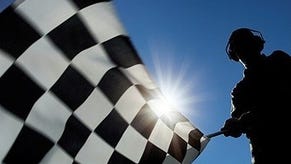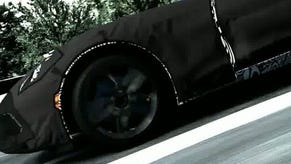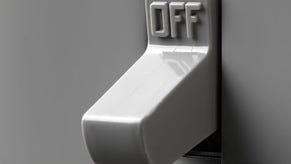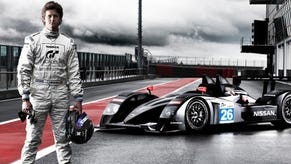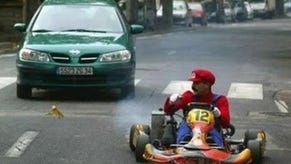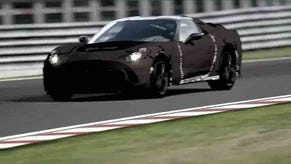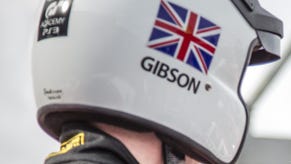Gran Turismo 5 Tech Analysis
Digital Foundry's most comprehensive feature ever.
Gran Turismo 5: 720p/1080p/3D Performance Analyses
Let's move onto the frame-rates - another major component of the Gran Turismo experience. In our Xbox 360/PS3 performance analyses, typically we like to compare both like-for-like cut-scenes and selected excerpts of gameplay to give an overall feeling for engine throughput.
Of course there is no Xbox 360 version to compare with, but arguably we can go one better. GT5 has individual support for 720p, 1080p and 3D. By capturing and analysing the same replay clips in each of the three different modes, we can better understand the strengths and weaknesses of the GT5 engine.
So here's a compilation video to mull over. Bearing in mind that this is an analysis quite unlike any other we've carried out in the past, some explanation is in order. First of all, colour coding: the cyan line and tear-info at the top represents 720p performance. The dark blue line and middle tear graphs indicate the same clip being analysed in 1080p mode. Finally the green line tallies with 3D frame-rates and tear data.
As you saw in the screenshots earlier, the 3D mode is actually a single frame with the left eye view on the top, and the right eye view on the bottom. So as tearing travels down it'll move from the left to right eye view. Translated to the tear graph, anything above the 10FPS line means tearing in the left eye, anything below means tearing in the right eye view.
The results are extraordinary. The overall performance profile of the game is uncannily similar to Gran Turismo 5 Prologue, and in like-for-like situations, there are actually lower frame-rates and more tearing than we saw in Gran Turismo 4 on the PS2. Dropped frames and tearing are clearly visible and occasionally rather off-putting.
Intriguingly, the 1080p mode, processing 50 per cent more pixels than 720p, manages to keep pace very well indeed - sometimes it even outperforms the 720p mode. You'll notice that performance is very much synchronous between the two modes in almost all cases. Yes, there is a small performance deficit (to the tune of around two frames per second on average) and occasionally there is more tearing - but to the human eye there is little that can tell them apart in terms of frame-rate perception.
So how is this possible? There isn't just a resolution difference between 720p and 1080p, of course, there's the matter of the anti-aliasing too. Dropping down from the 4x MSAA of the 720p to the 2x QAA of 1080p will help in bridging the gap, so one of the remaining differentiating factors will be in pixel-shading the cars.
The 3D mode is a different matter entirely, of course. Polyphony has opted for what is to all intents and purposes a zero-compromise policy to the game's visuals. The Sony stereo 3D team at Evolution Studios has outlined a range of measures developers can take in boosting performance for 3D games, from using dynamic resolution changes to lower-LOD models (Evolution's own MotorStorm: Pacific Rift 3D title employs both tricks). Polyphony, however, has adopted the approach used in WipEout HD - maintain the look of the game (4x MSAA aside) and take the hit in frame-rate.
However, unlike WipEout HD, the frame-rate remains unlocked, giving a somewhat uneven judder to the game. Frame-rate is variable. At its nadir, we see 18FPS on a car-logged Special Stage Route 7, and at best we can see around 50FPS in our Nurburgring test. Chances are that with a track created with the course maker, in concert with a time trial (to eliminate the other cars), we could see this rise to 60FPS - an effective 120FPS throughput!
The video above is a compilation of clips taken from a range of videos, which you can view in their entirely here, or download in high quality 720p60 for viewing on PC or console. Additionally, the compilation video, the GT4/GT5 comparison and the time of day rallying video feataured below are also available for offline viewing.
- London: View/Download
- Madrid: View/Download
- Nurburgring: View/Download
- Special Stage Route 7: View/Download
- Chamonix: View/Download
It's interesting to note that while the frame-rate of the 3D version takes a substantial hit, it still manages to look better than a great deal of the 30Hz racers out there. Also intriguing is how the tearing seems to all but disappear to the human eye. WipEout HD was more noticeable with an odd-looking sensation when tearing affected one eye only, perhaps owing to the wildly varying on-screen action. GT5 is a different case entirely - because the action is much more slowly paced, and the fact that the tear can only be on one "eye" at any given point, it seems to blend the image and tearing is all but unnoticeable. The much lower frame-rate also ensures that the actual number of torn frames is significantly lower too.
Explaining why there is a performance deficit with the 3D mode is fairly straightforward, as long-term Digital Foundry readers will know. There are many challenges in supporting true stereoscopy but it comes down to several factors. Firstly, there's raw pixel throughput and the additional RAM requirement of supporting a larger framebuffer. Polyphony supports a 1280x1080 resolution for its 1080p mode so the company has a bit of overhead here in supporting the 1280x1470 framebuffer for 3D in terms of both fill-rate and RAM. While many game-makers will upscale to make 3D feasible, Polyphony doesn't feel the need to do so.
The next challenge is somewhat more difficult to overcome. In producing two similar but very different viewpoints for 3D, the geometry of the scene - the wire-mesh, if you will - needs to be processed twice. With Gran Turismo 5's cars reputedly pushing more than 100,000 polygons, that's a huge array of vertices that need to be processed twice to achieve true stereoscopy. Some elements of the scene such as shadow maps and environment maps can be shared between the two viewpoints, but geometry and pixel throughput will always be the real challenge for the current generation of consoles.

